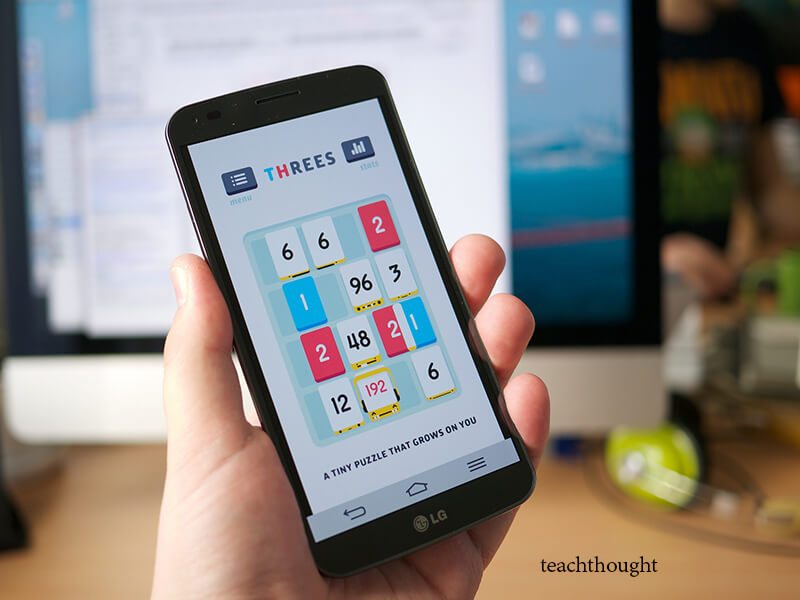What Technology Trends Are Rising In Public School Classrooms?
contributed by Lynsey Jenkins, VP Marketing of LapCabby
The conversation surrounding the ‘digital classroom’ of the future is consistently evolving as technological advances perpetually occur – seemingly at a faster rate than ever before.
However, the way in which these technological developments are integrated into learning environments has wide-reaching consequences. To safeguard future economic prosperity, the US has to ensure that its curriculum helps students develop the skills that they need. If it doesn‘t, the US may well find itself lagging behind other forward-thinking countries and their digitally-powered economies.
Here, we discuss two key themes that look set to shape and drive digital education over the coming year.
Trend #1: Gamification
Gamification is, fundamentally, applying game-like principles to a system in order to drive its interaction level and appeal to those using it – a high-scoring league for spelling tests being an incredibly basic example of this. However, with devices such as interactive white boards, tablets and even virtual reality becoming omnipresent in the classroom, there is currently no ceiling to how far gamification can be implemented. (You can read more about the difference between gamification and game-based learning here.)
The power of gamification is in its ability to provide context and repercussion to a student’s understanding and knowledge. They don’t see the data as an abstract “thing” held on a hard drive somewhere, but as a meaningful concept which can be relayed and used to enable change. Giving students such context gives them another opportunity to improve retention and comprehension rates.
However, the most apparent issue with gamification is, like with most technological advances, its correct implementation – if the game is too abstract then the knowledge becomes secondary to the game, yet if it isn’t streamlined then the game can take up too much time, or can prove too costly in some areas of education. It’s important to remember that gamification is an addition to the classroom – good teachers are needed to drive it as a concept and ensure that it delivers the results it has the ability too.
Moreover, teachers must be equipped with the right skills to deliver such additions to the curriculum. One only needs to look to companies such as Graphite and Playful Learning, who are both leading the gamification charge. Estimates show to the gamification field is projected to grow to over $5.5 billion across the globe in 2018, with the US ahead of the curve with innovating and developing new ideas. Undoubtedly, knowledge sharing between the US and the UK will be key to gamification’s continued success and further adoption in classrooms.
Trend #2: Device Mesh
The device mesh refers to the rapidly expanding ways in which people access applications and information, as well as communicate with each other across the internet on both a personal and organizational level. Initially encompassing technology such as smartphones and computers, the last few years has seen a rise in wearables, tablets, sensor systems, and even cars with technological features.
It is predicted that the interaction – or mesh – of these devices is set to become more and more interconnected as both the amount and the ability of these devices continues to expand. This is vital, as in modern technology there is a real emphasis on instant connectivity; an ability to access information as quick as needed and wherever you so happen to request it. Currently, specific environments such as schools and places of work are at the top of the food chain for the device mesh, but increasingly people also want to access their information from at home or whilst on the move.
The idea of this web of connected devices has a chance, when implemented correctly, to really change education and the way in which we access education resources and associated materials. A fully integrated future will have a student’s work cloud saved and accessible across all of their internet enabled devices, allowing them to learn in whichever way best works for them and at times where previously their work wouldn’t be accessible.
The device mesh will demand careful management as it moves forward to being a fully realized premise, with data accessibility and security key components to be managed. The use of technology is becoming widespread in education, from tablets and interactive whiteboards in the classroom to Chromebooks and cloud storage access for homework, so early signs that the device mesh may well become reality in the classroom are encouraging.
4 Other Rising Technology Trends In Public School Classrooms
- Game-Based Learning
- Flipped Classroom & Blended Learning
- Mobile Learning
- Big Data and Data ‘Mining’
The Key: Implementation
Gamification, device mesh, and the other trends list are just some of the current crop of technology-based trends that are being adopted in educational environments, across the breadth of the industry. But the technology is only half of the debate: for it to be fully successful, we also need to make sure that technology’s impact on learning is positive and measurable.
It isn’t enough that people are now taking science lessons in virtual reality – this must have a concrete impact on retention, comprehension and the transfer of this knowledge to skills in employment. Furthermore, there is little point in being taught a subject through hi-tech wearables only to be tested on it with a two-hour written exam. In order to make sure that the technology has the necessary positive impact on students, then the curriculum and testing needs to move forward and compliment how they are being taught.
It’s clear that not all technology adoption will be instantaneous, or work at all, so this shift in classroom culture will have to be a deliberate and careful process. But as long as technology is carefully implemented, deployed and monitored in a method that enhances the expertise of skilled teachers and curriculum, then the fascinating notion of the digital classroom can’t be too far in the future.
image attribution flickr user karlisdambrans
